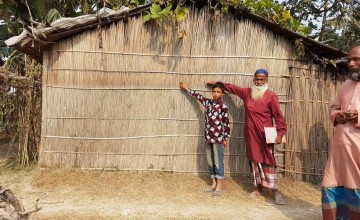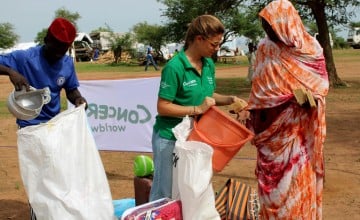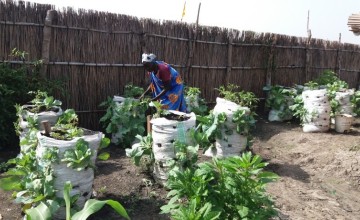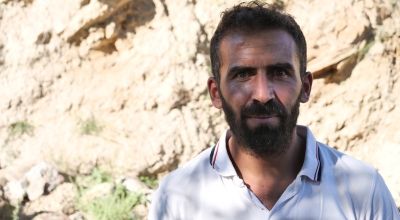
Read our 2023 annual report

Knowledge Hub
Disaster risk management (DRM) is the implementation of disaster risk reduction (DRR).
A dual-mandate organisation, Concern both responds to immediate emergencies and focuses on longer-term development goals. In both cases, disaster risk reduction plays a large part in our work to offset the risks posed by poverty and many of its causes.
But what does DRR look like in practice?
Disaster risk management: The big picture
DRR is a science, and one that affects many areas of development and humanitarian aid: As we mentioned in our explainer on DRR, there is a UN office for Disaster Risk Reduction (UNDRR), which provides an overall framework for organisations like Concern to work with. This framework, known as the Sendai Framework, was the first major agreement of the Sustainable Development Goals, and goes hand-in-hand with other 2030 Agenda initiatives, including the Paris Climate Agreement, the Addis Ababa Action Agenda, and the New Urban Agenda.

There are seven targets of the Sendai Framework that guide DRM on the whole, each one falling under either the larger goals of Reduce and Increase:
Reduce:
- Global disaster mortalities
- The number of people globally affected by disasters
- The direct economic loss of disasters (in relation to GDP)
- Disaster-caused damage to critical infrastructure and interruption of basic services
Increase:
- The number of countries with national and local DRR strategies
- International cooperation with low-income countries
- Availability of and access to multi-hazard early warning systems
Concern works within the Sendai Framework as well, but we also have our own core approaches to disaster risk management that help us to build plans that work. Here are our seven key principles.

1. Risk is a main contributor to poverty
The cycle of poverty runs on risk, and all of the communities that Concern works with are prone to different degrees of risk. If our development work is going to help with communities being more sustainable and lifting themselves out of extreme poverty, then we have to also do our best to offset the humanitarian emergencies that can throw development work off track. All Concern programmes incorporate some degree of disaster risk reduction.
2. Understand the range of hazards
Hazards are the building blocks of risk. Any event with the potential to cause damage or harm is a hazard. This includes conflict, climate change and — because these hazards often feed into one another — it also includes the complex emergencies that happen when these or other challenges are combined. Understanding how each individual hazard may affect a community, on its own and in combination with other hazards, is essential to having an effective response to risk.

3. Focus on specific vulnerability
Concern may not always specifically target the extreme poor, but the impact of our work must benefit the poorest and most vulnerable. Vulnerability is complex and unique to different countries, regions, communities, and even families. Because of this, we always listen first and gain an understanding of a community’s specific needs and challenges so that we can tailor our work to the needs that are identified.
4. Give equal attention to catastrophic and everyday risk
Not all risks are created equal, either, but it’s important to place equal emphasis on responding to both catastrophes — like earthquakes, floods, or droughts that often require emergency humanitarian aid — and the more “everyday” risks that may be smaller in scale but, over time, deplete community assets. In these cases, rather than bringing in emergency aid, we can focus on household- and community-level development programmes that build resilience, like Climate Smart Agriculture or keyhole gardens to offset hunger risk.

5. Part of DRR must respond to climate change
Climate change not only increases the negative impact when hazard and vulnerability collide, but it also does so at a higher level for some of the most vulnerable communities. The effects of the climate crisis are felt most keenly in many of the countries where Concern works.
We can’t halt climate change entirely, but we can increase the number of communities with a response plan, foster international cooperation, and plan multi-hazard warning systems that take climate threats into account.
6. Part of DRR must also respond to conflict
Conflict may not be a natural disaster, but it is a common hazard in many of the countries where Concern works. (Conflict and climate change often go hand-in-hand, as well.)
The ultimate goal is to end conflict, full stop, in order to end poverty. But our work in the meantime means reducing the deaths, economic losses, and infrastructural damages that result from conflict. The scale and level of conflict also affects our type of response.

7. Responding to disasters is not part of DRR — but preparing for response is
Preparedness for Effective Emergency Response (PEER) is Concern’s internal process to make sure we’re ready, willing, and able to mount speedy and effective emergency responses in all of our countries of operation. (And we’re able to jump in quickly and confidently thanks in large part to our community of monthly donors.) Responding to emergencies when they do arise isn’t officially part of DRR, but having a plan in place for those responses is.
You can help us reduce the risk of disasters
Life is unpredictable, especially in the world’s poorest and most fragile places. While we can’t predict the unpredictable, we can prepare for it, and there’s a simple way for you to give us an extra push: Join Concern as a monthly giver.
From drought in the Horn of Africa to conflict in Ukraine, we have been able to respond quickly and confidently to dozens of emergencies every year thanks to a strong, reliable core of financial support — one that renews itself every month. It’s the same reason we’re able to work in places like Haiti or the Central African Republic, where millions are suffering outside of the view of news cameras. We can go where the need is greatest because we know we don’t have to go it alone. You’re with us.




